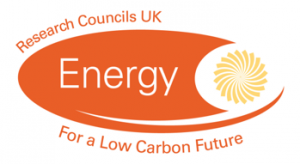
Multiscale Tuning of Interfaces and Surfaces for Energy Applications (MISE) is a £2.1 million EPSRC networking Centre in partnership between four UK universities: St Andrews, Edinburgh, Bath and Birmingham.

The core research programme will address topics relating to optimisation of interface structures, morphologies and compositions to enhance performance, longevity and value. This will be acheived through collaborative working and networking between partners. The centre aims to identify synergies between the other EPSRC Centres of Advanced Materials for Energy Generation and Transmission at the Universities of Edinburgh, Centre for Advanced Materials for Renewable Energy Generation (CAMREG) , Cambridge, Centre for Advanced Materials for Integrated Energy Systems (CAM-IES) , Newcastle, North East Centre for Energy Materials (NECEM), University College London, Joint University-Industry Consortium for Energy (Materials) and Devices (JUICED) and Oxford, Materials Research Hub for Energy Conversion, Capture, and Storage (M-RHEX), together with our University partners, industry and stakeholder groups.
Global warming and the finite nature of fossil fuels conspire to present one of the greatest threats to humankind in the 21st century. If we are to maintain our technological society and leave a planet fit for our grandchildren, we must develop fundamentally different ways of generating, s toring and transmitting energy. Not only is this a great challenge for Society, it also represents a tremendous opportunity for business. Meeting this challenge will require innovative new approaches and careful nurturing of the translation of this research to Industrial Development. Energy Materials research is the key enabler for these new technologies.
toring and transmitting energy. Not only is this a great challenge for Society, it also represents a tremendous opportunity for business. Meeting this challenge will require innovative new approaches and careful nurturing of the translation of this research to Industrial Development. Energy Materials research is the key enabler for these new technologies.
Energy Materials are those that are directly involved in the baseline conversion and storage processes for many energy technologies. They are a highly exciting area of research underpinning many of the key areas of emerging technologies. Most importantly, the enabling materials science, solid state chemistry, physics, theory, characterisation and processing technologies are easily translated between topics and much is to be gained from the transfer of concepts or materials between topics. Key future technologies reliant upon Energy Materials research that is addressed by the Core members of this project and their anticipated application domains are:
Batteries for Transport – Whilst lithium-ion battery electric vehicles are already an attractive market-ready technology, the rate of adoption will be restricted by their power, range and load carrying capability. New battery materials and concepts need to be developed, increasing capacity and lifetime, lowering cost, improving safety, recharging and sustainability of the components, e.g. by reducing cobalt content.
Batteries for Load-levelling – For large scale energy storage the current lithium-ion and high temperature sodium batteries are only applicable at moderate scales and short timescales. There are major challenges to be addressed, viz. greatly reducing the cost, improving the volumetric energy density and sustainability of materials. All this needs to be achieved whilst ensuring safe operation and good power performance.
New Battery Technologies – Lithium-air and lithium-sulphur secondary batteries hold considerable promise for both transport and stationary applications, but still require much R&D to deliver commercial success. Along with technologies such as magnesium and aluminium secondary batteries, they are key future technologies that, whilst further from market, promise to be genuinely disruptive.
Low Cost Solid Oxide Fuel Cells (SOFCs) – This technology offers the high efficiency conversion of a wide range of fuels to electricity at a range of scales. The technology has just reached market in distributed power generation and micro-CHP in California and Japan respectively. The key challenges are cost reduction, understanding and addressing durability, improving efficiency and fuel utilisation.
Fuel Flexible SOFCs (e.g. Biogas) – A key attribute of SOFCs is their ability to utilise complex fuels; a key challenge is to extend this flexibility further to logistic fuels such as LPG, diesel and biofuels such as biogas and glycerol. The main challenges are sulphur and redox tolerance and coking resistance.
Reversible Fuel Cells – Offer much higher storage capacities than current batteries and have the potential to store multi-MWhrs over periods of weeks. Efficiency can be greatly enhanced through good thermal management. There are significant challenges in designing the system and introducing balanced stores to optimise capacity and cycle efficiency.
Direct Carbon Fuel Cells – Carbon in the form of coal, biochars and pyrolysis waste represents a series of major energy resources that are currently converted to electrical energy at low efficiency by combustion methods. Direct carbon fuel cells are a radical new technology that promise to double conversion efficiency and hence greatly reduce CO2 emissions. The technology needs to be scaled up, durability achieved and appropriate carbon delivery mechanisms developed.
High Temperature Polymer Fuel Cells – Polymer fuel cells are currently being utilised in many transport demonstrations and are close to initial commercial deployment. A significant energy loss factor relates to the forced cooling of the systems. Much cheaper and simpler air cooling technologies can be introduced if operation can be achieved above 150oC.
Novel Solar Cells – Nanocomposite and organic solar cells offer good low cost alternatives to conventional silicon and GaAs based photovoltaics. Organic solar cells also offer excellent mechanical flexibility and have the potential to be integrated into a wide range of structures or even onto clothing. Key challenges are maximising conversion efficiency and achieving durable solutions.
Organic Optoelectronics – These offer excellent processability and are lightweight. There is great potential for integrating energy efficient devices such as LEDs into household, workplace and vehicular devices.
Photoelectrochemical Conversion – As opposed to photovoltaic actions, it is possible to irradiate semiconductors with sunlight to produce chemicals and fuels. This can be hydrogen from water splitting or hydrocarbons from CO2 reduction. An alternative approach that has clear applications utilises sunlight to decompose waste materials or activate biomass with hydrogen produced as a by-product.
Hydrogen from Steam Electrolysis – High temperature steam electrolysis utilises internal and/external heat to convert steam to hydrogen and is deliverable at >100 kW scale; however, much work needs to be done to optimise long term durability, responsiveness and reduce cost.
Fuels Produced via Electrolysis – Power to gas is an emerging technology and co-electrolysis of CO2 and H2O is an extremely promising approach that combines storage of excess intermittent energy with carbon dioxide capture. This produces syngas (CO + H2), an industrially important feedstock that can be reacted via the Fischer Tropsch process to form hydrocarbons such as diesel.
Electrochemical Production of Ammonia – Small scale production of ammonia for use as a fertiliser or fuel, e.g. on farms, is very attractive. An important approach that requires further improvement is via the electro-reduction of nitrogen.
Biomass Conversion – The thermal conversion of biomass to chars over catalysts, also known as pyrolysis, yields a number of valuable chemicals as well as a char ideally suited for use in direct carbon fuel cells. Mastering the overall process thermodynamics, optimises the efficiency and cost proposition. The extension of this concept leads to the idea of a bio refinery; which would produce high-value chemicals.
Waste Utilisation – A related concept is the utilisation of waste from bioenergy conversion such as glycerol from biodiesel, biogas from anaerobic digestion or even more efficient conversion of biofuels in fuel cells.
Higher Temperature Conventional Energy Production – Significant improvements in materials temperature capability are needed to realise increases in efficiency and reductions in costs, pollution and noise via the enhanced ability to withstand hostile aero-thermo-chemical environments and severe stresses.
Energy Harvesting – The harvesting of environmental energy sources such as mechanical vibration and thermal waste requires the development of optimised non-toxic functional materials and processes for the manufacture of cost effective and reliable devices.
